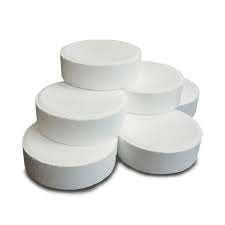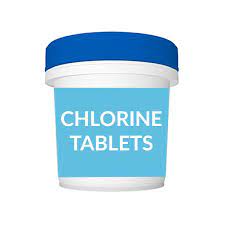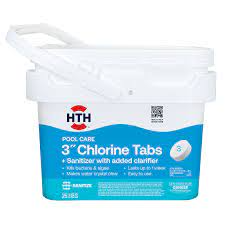Introduction
Unfolding the Mystery of Chlorination
Maintaining a sparkling clean and sanitary swimming pool is an ongoing process that requires careful attention to water chemistry, one key component being chlorine. Chlorine tablets are the lifeblood of pool sanitation, eradicating bacteria, algae, and other harmful microorganisms that can lurk in your pool’s depths. However, determining the correct number of chlorine tablets per week isn’t as straightforward as it seems; it depends on several factors including pool size, bather load, environmental conditions, and current chlorine levels. This comprehensive guide aims to demystify this process and provide you with a clear understanding of how many chlorine tablets your pool may need each week.
Understanding Chlorine Dosage Basics
The ABCs of Chlorine Usage
Chlorine tablets typically contain stabilized chlorine, which slowly dissolves over time releasing sanitizer into the water. The rule of thumb is to maintain a free chlorine level between 1-3 parts per million (ppm) for residential pools. However, the quantity needed weekly will vary based on factors like pool volume, sunlight exposure (which can cause chlorine to dissipate faster), and the frequency of use.
To calculate the initial dosage, consider the total amount of chlorine in each tablet and divide by your pool’s volume in gallons. Then, factor in the rate at which the tablet dissolves (usually provided by the manufacturer) and adjust according to your local weather and usage patterns.
Calculating Chlorine Needs Based on Pool Size
Sizing Up Your Chlorine Requirements
The size of your pool plays a pivotal role in determining the weekly chlorine tablet consumption. For instance, if you have a 15,000-gallon pool and are using 3-inch tablets containing 90% available chlorine, each tablet providing 9 ounces of chlorine, you would initially calculate how many tablets are required to raise the chlorine level to the recommended ppm.
Remember, maintaining a steady residual chlorine level means accounting for both the starting dose and the daily decay. A larger pool will generally require more tablets than a smaller one, but also consider that a higher volume of water can dilute the effect of contaminants, potentially requiring less frequent dosing.
Bather Load and Environmental Factors
Influences Beyond Pool Volume
Bather load refers to the number of people who swim in your pool and the accompanying organic matter they introduce (like sweat and sunscreen). High bather loads demand more chlorine to neutralize contaminants. Additionally, heavy rainfall, high temperatures, and intense sunlight can deplete chlorine levels rapidly.
Consider adjusting your weekly chlorine tablet regimen based on these external factors. During peak swimming season or after a heavy rainstorm, you might need to add extra tablets to compensate for increased contamination or dilution.
Seasonal Adjustments
Seasonal Variations in Chlorine Demand
Pool maintenance doesn’t follow a ‘one-size-fits-all’ approach throughout the year. Summer heat and UV rays tend to increase chlorine demand due to faster degradation, while winter months with less sunlight and lower water temperatures might necessitate less frequent dosing.
Adapt your chlorine schedule accordingly. In warmer months, you may find yourself adding tablets twice a week, whereas in cooler seasons, once-weekly doses could be sufficient.
Testing and Adjusting Your Chlorine Levels
The Importance of Regular Monitoring
Maintaining proper chlorine levels in swimming pools is a fundamental aspect of ensuring water quality, safety, and hygiene. Chlorine is the most common disinfectant used in pool sanitation because it effectively eradicates bacteria, viruses, algae, and other harmful microorganisms that can cause recreational water illnesses. Regular testing and adjusting of chlorine levels are crucial steps for any pool owner or operator, as inconsistent or incorrect levels can lead to health risks or even damage to the pool itself.
- Health Protection: Sufficient chlorine levels ensure that the water is free from pathogens that could cause illness or infection. When chlorine levels drop too low, there’s an increased risk of waterborne diseases spreading among swimmers.
- Chemical Balance: Chlorine not only sanitizes but also reacts with organic matter (like sweat, sunscreen, and body oils) and contaminants in the water, which can deplete its effectiveness. Frequent monitoring helps to maintain a balanced chemical composition.
- Prevention of Algae Growth: Properly maintained chlorine levels prevent algae growth, which can turn the water green and create an unsightly, slippery surface.
- Optimal Swim Experience: Correct chlorine levels prevent eye and skin irritation, giving swimmers a more comfortable and enjoyable experience.
Steps for Testing Chlorine Levels
- Use a Test Kit: Utilize a reliable test kit to measure both free chlorine (the available sanitizer) and combined chlorine (chloramines, which result from chlorine reacting with contaminants). The ideal range is typically 1-3 parts per million (ppm) for free chlorine and minimal levels for combined chlorine.
- Regular Testing: Test your pool water at least twice a week, and more often during heavy use periods or after storms.
Adjusting Chlorine Levels
- Increasing Chlorine: If levels are low, add a stabilized chlorine product according to manufacturer instructions or shock treat the pool to raise the chlorine level quickly and eliminate any built-up contaminants.
- Reducing Combined Chlorine: High levels of combined chlorine require super-chlorination or shocking to break down chloramines.
- Balancing pH: Chlorine effectiveness is highly dependent on pH; it should be kept between 7.2 and 7.8. Adjust pH levels first before making changes to chlorine, as high or low pH can impact how well chlorine works.
In conclusion, regular monitoring and adjustment of chlorine levels are indispensable practices in pool maintenance. It requires vigilance, understanding of the chemistry involved, and timely action based on test results. By adhering to these principles, you’ll uphold a clean, safe, and inviting environment for all those who enjoy your swimming pool. Remember, proactive management beats remedial action every time when it comes to maintaining optimal chlorine levels in your pool.
Conclusion
Determining the right number of chlorine tablets per week is a dynamic process that involves continuous monitoring, adaptation to changing circumstances, and informed decision-making. While there’s no definitive answer, armed with the knowledge of your pool’s specifics, seasonal changes, and usage patterns, you can effectively manage your chlorine levels.
Remember, proper chlorination not only ensures a clean, inviting pool but also safeguards the health of swimmers. It’s about balance—neither too little nor too much. With consistent practice and vigilance, mastering the art of chlorine management becomes a cornerstone of successful pool upkeep.